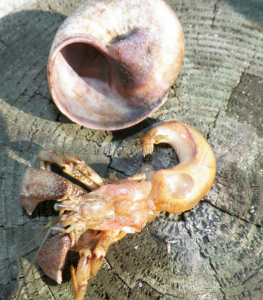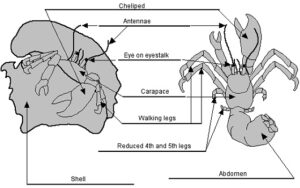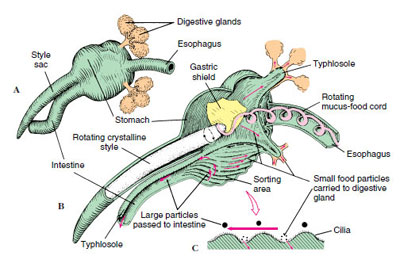
Barnegat Bay is home to several species of crabs, but the Blue crab is the most common and sought after.
Crabs Crustaceans
Long-Armed Hermit Crab Pagurus longicarpus
 The long-armed hermit crab, is a small western Atlantic hermit crab.
The long-armed hermit crab, is a small western Atlantic hermit crab.
It belongs to the genus Pagurus, all members of which have unequal chelipeds (claws) in which the right is substantially larger than the left.
In the case of P. longicarpus, the oversized claw is long and slender and approximately cylindrical in shape.
Body color is highly variable, ranging from beige to off-white to greenish-grey to brown.
Hermit crabs are omnivorous scavengers, eating microscopic mussels and clams, bits of dead animals, and macroalgae.
 Hermit crabs are anomuran decapod crustaceans that have adapted to occupy empty scavenged mollusk shells to protect their fragile exoskeletons.
Hermit crabs are anomuran decapod crustaceans that have adapted to occupy empty scavenged mollusk shells to protect their fragile exoskeletons.
Hermit crabs are omnivorous scavengers, eating microscopic mussels and clams, bits of dead animals, and macroalgae.
One Man’s Trash – Another Man’s (crab’s) Treasure
Another Man’s (crab’s) Treasure
 These crustaceans have been misnamed for two reasons:
These crustaceans have been misnamed for two reasons:
First, they’re not true crabs in that they don’t have a uniformly hard exoskeleton and can’t grow their own shells.
Instead, hermit crabs have a hard exoskeleton on the front part of their bodies but a soft tail on the other half, which they protect using the discarded shells of other animals, like snails or whelks.
Also, they are more closely related to certain kinds of lobsters than to true crabs.
Hermit crabs have a curled tail with a hook that enables their bodies to fit inside these borrowed shells.
Fun Fact – hermit crabs can be classified as marine hermit crabs and land hermit crabs.
Marine crabs breathe through gills using the oxygen dissolved in water.
Land crabs have a modified gill mechanism that absorbs oxygen from the humidity in the air.
 The four hind legs that appear to be missing have evolved into grippers that hold the crab inside the shell so strongly that you will tear the animal in half before you can extract it.
The four hind legs that appear to be missing have evolved into grippers that hold the crab inside the shell so strongly that you will tear the animal in half before you can extract it.
The claws are usually shaped so that together they will exactly block off the opening when the crab retreats inside.
Hermit Crabs are always on the lookout for bigger and better shells, and when they find one they like, they quickly switch to see if is the right fit.
